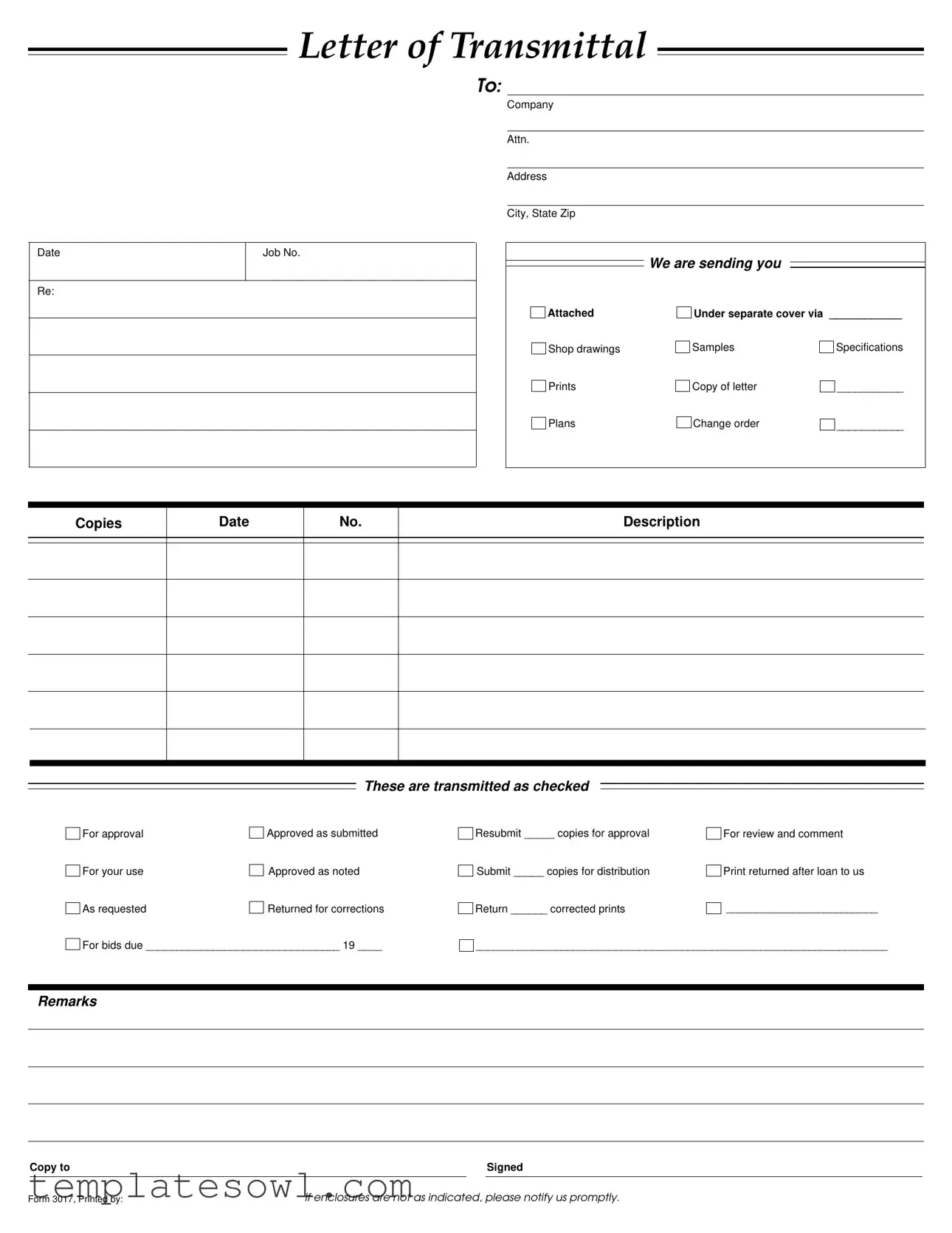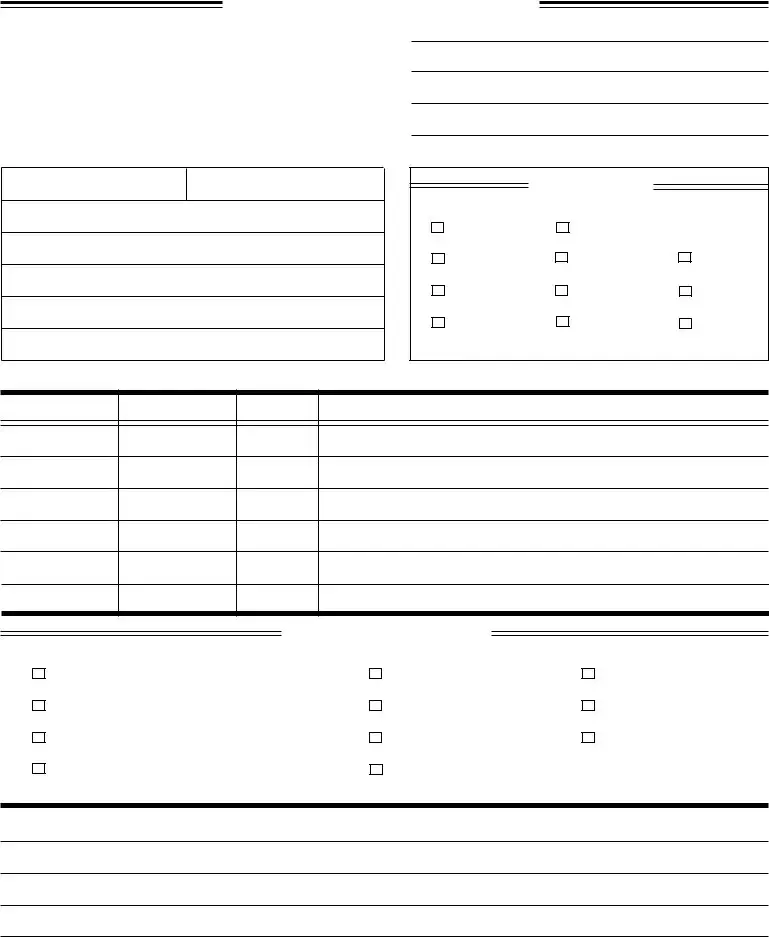What is a Transmittal Form?
A Transmittal Form is a document used to accompany various materials that are sent between parties in a construction or project management setting. It serves as a record of the items being transmitted and provides essential information regarding their purpose and status. The form often includes details such as the job number, the company involved, and the specifics of the documents included, ensuring clear communication between the parties.
What information is typically included on a Transmittal Form?
Typically, a Transmittal Form includes the date of transmission, job number, company name and contact information, and a list of the enclosed documents. It may specify categories like shop drawings, samples, specifications, plans, or change orders. Furthermore, it outlines the intended use of the items sent, such as whether they are for approval, for review, or returned for corrections.
Why is a Transmittal Form important?
A Transmittal Form is crucial for maintaining organized communication and documentation among parties involved in a project. It helps ensure accountability by providing a clear trail of what has been sent, along with any requirements for further action. This helps to prevent misunderstandings and delays that can arise from untracked communications.
How should I fill out a Transmittal Form?
To fill out a Transmittal Form, start with the date and the job number at the top. Clearly indicate the company's name and the attention line with the appropriate contact person. Next, list the enclosures specifically, marking their purpose. Choose any relevant options regarding approval status or corrections needed. Finally, include any remarks and sign the form to indicate your acknowledgment and responsibility for the documents submitted.
How do I know what to send with the Transmittal Form?
Determine what documents are necessary based on the phase of the project and the requests from other parties. This could include shop drawings, specifications, or certain plans. Review contractual obligations and communications from clients or stakeholders to ensure that all required materials are included.
What happens if the enclosures on the Transmittal Form are incorrect?
If the enclosures listed on the Transmittal Form are incorrect or incomplete, the recipient should notify the sender promptly. This ensures quick resolution and minimizes delays in the ongoing project. The sender is typically responsible for addressing any discrepancies and resending the correct documents if necessary.
Can I send electronic documents using a Transmittal Form?
Yes, electronic documents can be transmitted using a Transmittal Form, but it is essential to clarify this in the format. Specify the method of transmission, such as email or a file-sharing platform, and ensure that all parties agree to the electronic format. Including the necessary security and access instructions may also be necessary for proper handling.
How can I ensure my documents are received securely?
To ensure secure receipt of documents, consider using a reliable transmission method that includes tracking or confirmation features. This can involve sending documents via a registered postal service, using encrypted email, or employing a secure file-sharing service. Always confirm receipt with the recipient and request feedback regarding any issues or concerns with the documents sent.
What should I do after I submit a Transmittal Form?
After submitting a Transmittal Form, it is wise to follow up with the recipient to confirm receipt and address any outstanding questions. Retain a copy of the completed Transmittal Form and any documents submitted for your records. This provides a reference for any potential future discussions or disputes regarding the transmitted materials.

